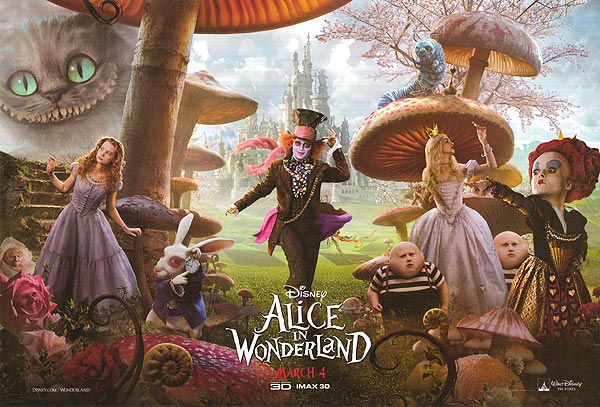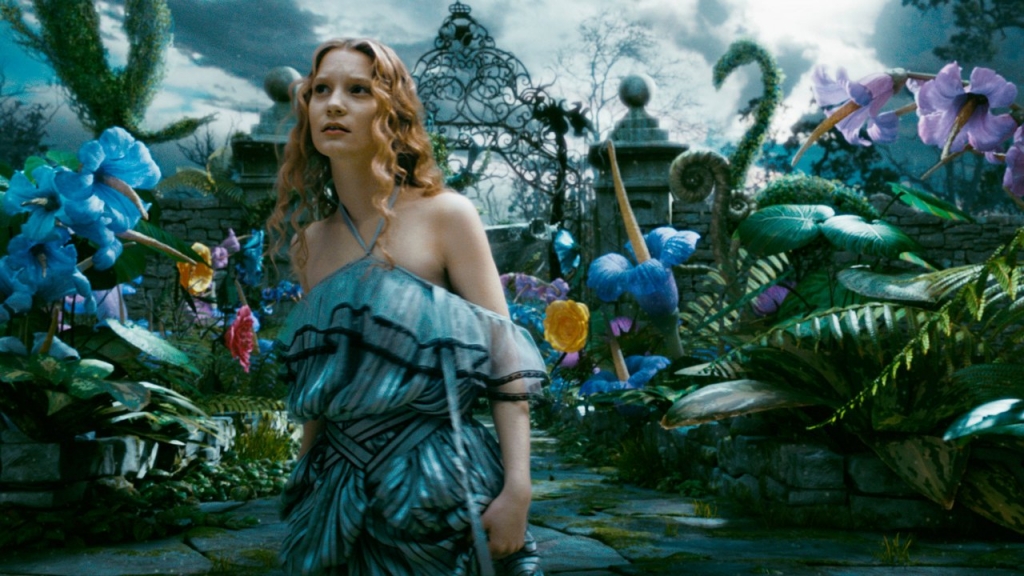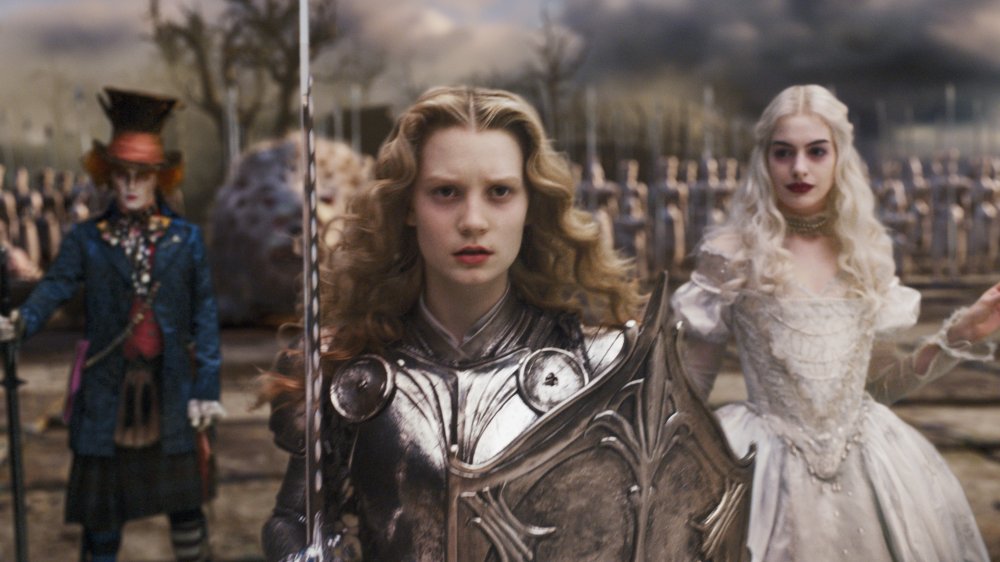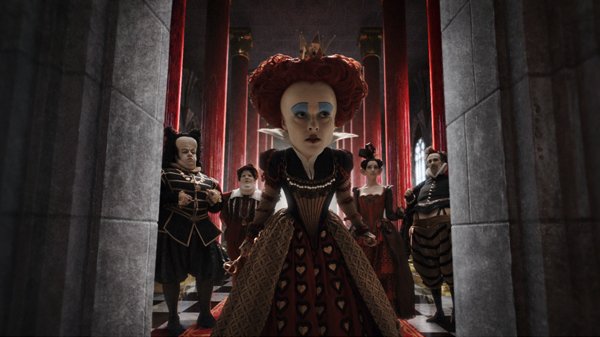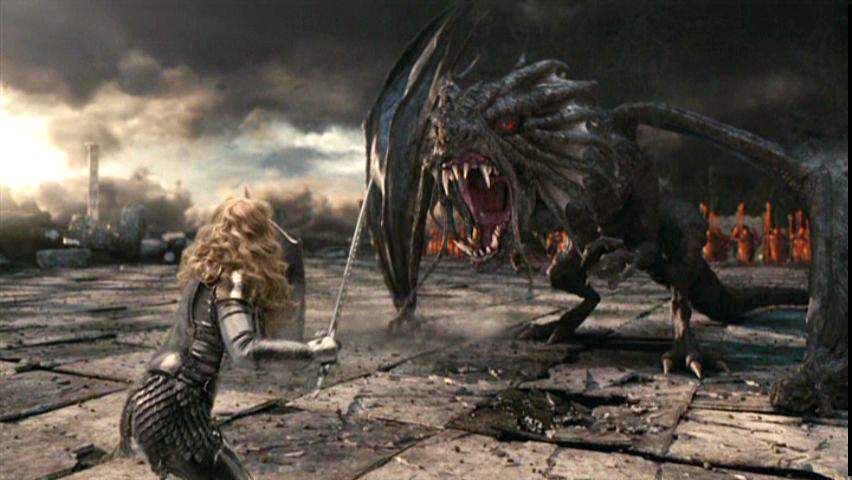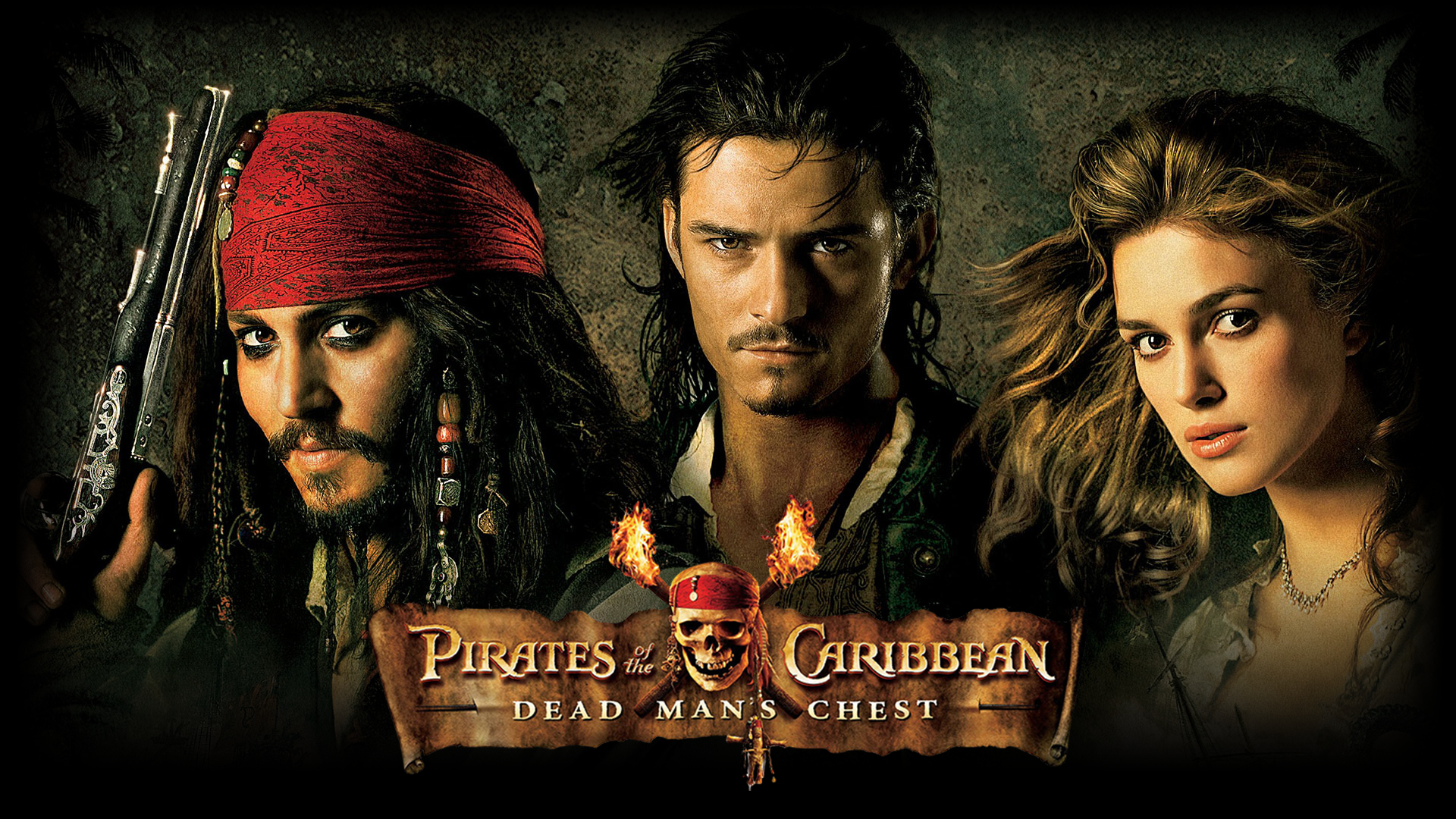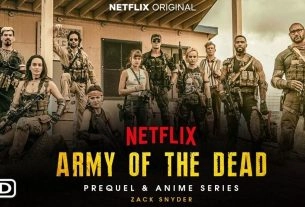Not that there was any doubt that, when it came to restaging the 1865 Lewis Carroll classic for a 21st century sensibility, Tim Burton would be the man for the job.
But even the filmmaker’s trademark winsomely outlandish style doesn’t prepare you for the thoroughly enjoyable spectacle that is his “Alice in Wonderland.”
A fantastical romp that proves every bit as transporting as that movie about the blue people of Pandora, his “Alice” is more than just a gorgeous 3D sight to behold.
Armed with a smartly reshaped but still reverential script by Linda Woolverton (“Beauty and the Beast,” “The Lion King”), Burton has delivered a subversively witty, brilliantly cast, whimsically appointed dazzler that also manages to hit all the emotionally satisfying marks.
Disney won’t have to consume any little cakes in glass boxes in order for the resulting worldwide boxoffice to reach colossal heights.
That’s a given for this PG-rated (blame it on that smoking caterpillar) release, which also should emerge as an early, cross-category Oscar contender.
No longer a wide-eyed child, Alice Kingsleigh (a pitch-perfect Mia Wasikowska) is now an easily distracted 19-year-old who seems hopelessly out of sync with her muted Victorian surroundings.
Dodging a garden-party marriage proposal from the dorky son of a lord and lady, Alice instead opts to take off after a pocket watch-clutching rabbit (voiced by Michael Sheen), giving those 3D glasses their first major workout as she plunges deeper and deeper into Underland.
Although she doesn’t realize it, Alice has been down this particular rabbit hole before, when she was a much younger, more spirited girl.
But before she’s able to get back in touch with her “muchness,” she’ll bond with a mercury-poisoned Mad Hatter (Johnny Depp, in another blissfully out-there tragicomic performance) and butt heads with the tyrannical Iracebeth (a never-better Helena Bonham Carter, who is an absolute scream of a Red Queen).
Whether they were required to spend quality time in front of a greenscreen or were totally CGI creations, all the usual suspects, from the rotund Tweedledee and Tweedledum (Matt Lucas times two) to the disembodied Cheshire Cat (Stephen Fry) to the fearsome Jabberwocky (the great Christopher Lee), are present and brilliantly accounted for in collaboration with special effects master Ken Ralston.
Although Carroll purists might pooh-pooh some of the script’s more radical alterations, like bringing Alice up to legal age, the shift helps hit home the film’s welcome message of female empowerment.
Ultimately, it’s the visual landscape that makes Alice’s newest adventure so wondrous, as technology has finally been able to catch up with Burton’s endlessly fertile imagination.
Also taking their cues from John Tenniel’s original illustrations, Robert Stromberg’s fanciful production design and costume designer Colleen Atwood’s ever-inspired wardrobe selection help make it quite the trippy trip.
In 2010, Tim Burton released Alice in Wonderland, based on Lewis Carroll’s novels Alice’s Adventures in Wonderland and Through the Looking Glass. Starring Mia Wasikowska, Johnny Depp, Helena Bonham Carter, Anne Hathaway, Crispin Glover, Matt Lucas, Frances de la Tour, Leo Bill, Marton Csokas, Michael Sheen, Alan Rickman, Stephen Fry, Barbara Windsor, Paul Whitehouse, Timothy Spall, Michael Gough, Christopher Lee, Imelda Staunton, Jim Carter and Frank Welker, the film grossed $1.025 billion at the box office. Winner of the Academy Awards for Best Art Direction and Best Costume Design along with the Satellite Awards for Best Visual Effects and Best Costume Design and the Saturn Awards for Best Fantasy Film and Best Costume, the film was nominated for the Academy Award for Best Visual Effects, the Golden Globe Awards for Best Motion Picture – Musical or Comedy, Best Actor – Motion Picture Musical or Comedy, and Best Original Score, the Satellite Awards for Best Art Direction * Production Design, Best Motion Picture, Animated or Mixed Media and Best Original Song and the Saturn Awards for Best Make-Up, Best Production Design and Best Special Effects.
Yet another bizarre film from the mind of Burton, Alice in Wonderland is a pretty good film with its furthering of the original plotline seen in the original novels. Rather than Alice falling down the rabbit hole and discovering Wonderland, or Underland as it’s actually called, for the first time, she’s returning to a place that she once believed to be a dream. With the amount of people who know the original story and are familiar with all of its trappings, this has the essence of an interesting sequel without it actually being one as the film outright shows as well as cleverly alludes to what happened the first time she was there along with what happened after she left. Rather than just being a series of bizarre happenings and meetings, this moves beyond that. It becomes a cohesive story where the characters must make right what once went wrong and in this case, that’s Alice becoming the foretold champion and ending the Red Queen’s reign of evil by slaying the Jabberwocky.
Notably though, its depiction of the Jabberwocky is where the film eventually falls a little bit short. Here the audience is presented with a monstrous character, one that’s practically made for the kind of film Burton makes. But all that’s delivered is a short battle and two lines spoken by the character before its tongue is cut off. Not only is this a waste of a character as there could have been so much surrounding it such as why he sees the Vorpal Sword as an enemy, why he sides with the Red Queen and is loyal to her and why he sleeping by the battlefield, but it’s a waste of talent as well considering the voice actor was Christopher Lee. This doesn’t even go into how the creature in the original poem was called the Jabberwock.
At the same time, while Alice is a good character, her arc leaves a bit to be desired as well. The idea of a girl bored with the stiffness and rigidity of the expectations regarding her behavior in the Victorian era is nothing new and was explored in the 1951 film. Here though, Alice’s character is established as having the same innovative and explorative spirit as her father which is why she doesn’t like putting up with the rigidity and that’s only furthered by the path that fate has pushed her towards in Underland. As a result, when she gets back to the real world, Alice bucks the expectations, gives the idea that her father’s ideas weren’t enough and pitches the idea to expand trade to China, which the Lord Ascot goes along with. All of this is a great idea and is a good basis for a character arc. However, none of it feels fully formed and it seems like the film only went halfway, such as how Ascot immediately goes along with Alice’s idea unquestioningly simply because he believes Alice is her father’s daughter.
But even with the partial formation of Alice’s character arc and the wasted utilization of the Jabberwocky, the film does have a great visual design that’s quite indicative of Burton’s style. The other characters are all fun to watch as well, from the madness and insanity of the Mad Hatter, which Depp is able to portray very well, to how much of a tyrant the Red Queen is. Despite its problems, the film is still enjoyable.
